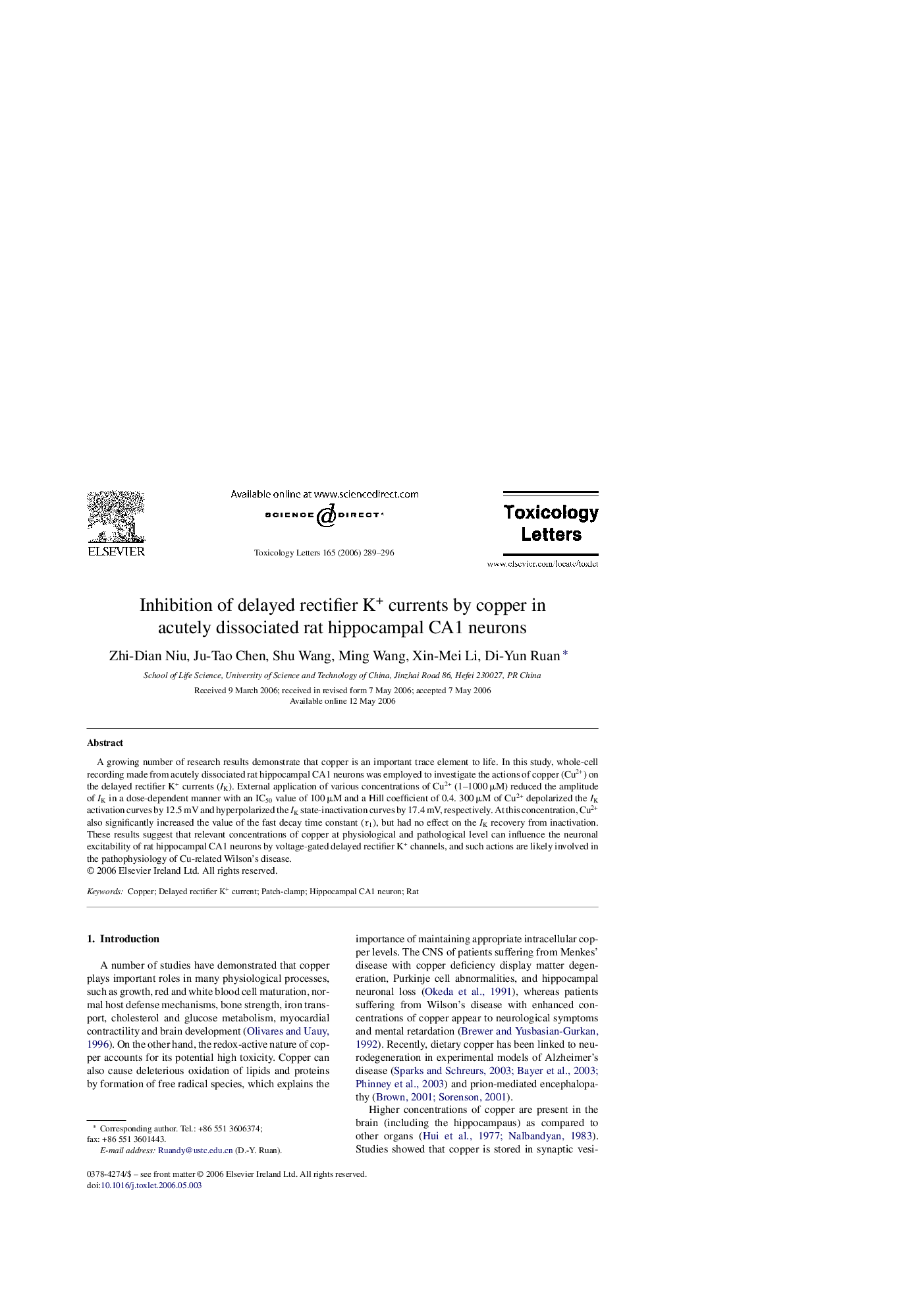| Article ID | Journal | Published Year | Pages | File Type |
|---|---|---|---|---|
| 2602354 | Toxicology Letters | 2006 | 8 Pages |
Abstract
A growing number of research results demonstrate that copper is an important trace element to life. In this study, whole-cell recording made from acutely dissociated rat hippocampal CA1 neurons was employed to investigate the actions of copper (Cu2+) on the delayed rectifier K+ currents (IK). External application of various concentrations of Cu2+ (1-1000 μM) reduced the amplitude of IK in a dose-dependent manner with an IC50 value of 100 μM and a Hill coefficient of 0.4. 300 μM of Cu2+ depolarized the IK activation curves by 12.5 mV and hyperpolarized the IK state-inactivation curves by 17.4 mV, respectively. At this concentration, Cu2+ also significantly increased the value of the fast decay time constant (Ï1), but had no effect on the IK recovery from inactivation. These results suggest that relevant concentrations of copper at physiological and pathological level can influence the neuronal excitability of rat hippocampal CA1 neurons by voltage-gated delayed rectifier K+ channels, and such actions are likely involved in the pathophysiology of Cu-related Wilson's disease.
Related Topics
Life Sciences
Environmental Science
Health, Toxicology and Mutagenesis
Authors
Zhi-Dian Niu, Ju-Tao Chen, Shu Wang, Ming Wang, Xin-Mei Li, Di-Yun Ruan,
